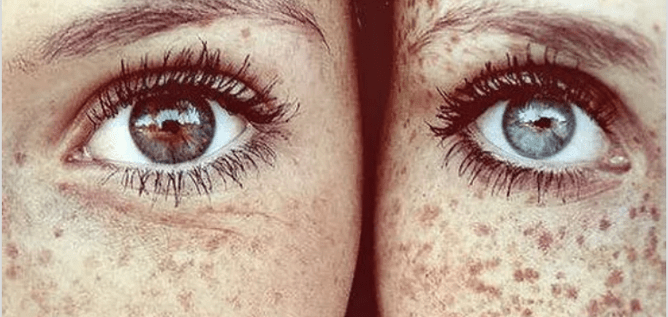Lets begin with a little background
Melanin is a pigment which is produced in the skin cell, which causes skin coloration.
Tyrosine (an amino acid) is converted to melanin through a series of complex thermal steps in the skin cells. This process may be effected by many different factors.
What are the different types of pigmentation?
Melasma (also known as Chloasma) is believed to be estrogen driven, only effecting women. Appears as a blotchy, brownish pigmentation on the face, develops slowly & fades with time. Usually noticed on the forehead, upper lip and cheeks. Triggers for this condition can include: Pregnancy & Hormonal contraceptives. Sun exposure and heat can worsen Melasma & if left untreated can lead to Hyper Pigmentation.
Hyper Pigmentation
Appears as brown patches or macules, often with a poorly defined boarder. Common causes for this condition include:
- Heredity
- Inflammation
- Medications
- Hormonal changes (such as Pregnancy and Menopause)
- Acne scarring
- Picking at the skin
- Sun exposure.
What can be done to treat the appearance of facial pigmentation?
Cosmecutical skin care, as you embark on a pigmentation programme it is greatly recommended you use a cosmetical grade, prescription skin care regime that has been customised to your individual skin needs.
Dermafrac - we recommend 6 treatments, at monthly intervals
The system is an innovative 4 in 1 cosmetic device allowing for an effective three phase treatment process including: Microdermabrasion, Concurrent skin needling, corrective treatment serum infusion & LED light treatment
Dermastamp - we recommend a minimum of 3 treatments done 6- 8 weeks apart.
A vibrational stamping device, creating very fine micro channels into the skin to help induce growth factors & stimulate collagen, resulting in tightening & breaking up pigment.
Laser
To treat pigmented lesions another option is to use a laser generated beam of intense, concentrated light.This beam of light brings energy to a specific site, without heating or effecting surrounding areas. The laser light is absorbed by the oxygen-carrying red blood cells and melanin pigment in the skin causing destruction by heat of unwanted cells whilst leaving healthy cells intact. Pulling the pigment to the surface, and it will flake off within a week or so, with lighter, brighter skin beneath.
Peels
A procedure in which a solution is applied to the skin using specific lightening, pigment fighting and Tyrosine inhibiting ingredients. There are many levels of skin peels available which cause surface or medium depth skin peeling. Some offer no down time while others may cause considerable "peeling"of the skin.
Take home message
- There are many triggers & causes for Pigmentation
- It is important to distinguish the type of Pigmentation you have. Melasma can be harder to treat & sometimes not with a laser light.
- Consider talking to your GP about changing to a mini pill if you suspect you have Melasma & are using oral contraceptive.
- Always use an SPF, even if you aren't going to be in direct sunlight all year round.
- Start using a prescripted Cosmeceutical skin care regime that will inhibit and stop pigment the production of pigmentation forming.
Book your skin consultation with us and we can get you on track to the brighter more even skin you deserve!
We are launching our very own Visia Skin Analysis Machine - exclusively to Pukekohe, learn more about it here



